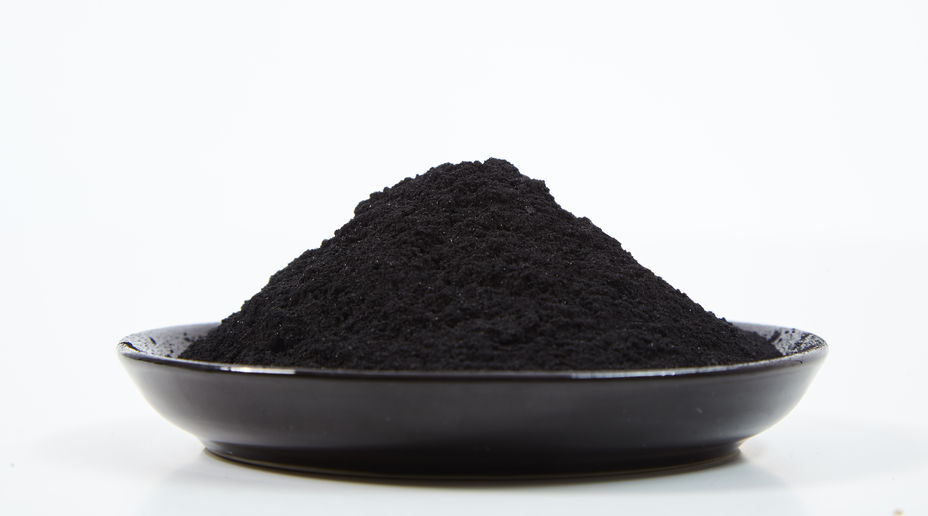Animal Charcoal - Carbo medicinalis

Common Names: Charcoal, animal charcoal, activated charcoal, activated carbon, medicinal charcoal, Carbon, Carbo Vegetabilis, Carbo medicinalis, Carbon Activado, Medicinal Charcoal, Vegetable Charcoal, Charbon Médicinal, Noir de Gaz, Noir de Lampe
Latin Name: Carbo medicinalis
Origin: Africa, Asia, Australia, Europe, South America, North America
Short Introduction
Animal charcoal, commonly known as activated charcoal, is a highly porous substance that has been used for generations, whether for digestive support or creative purposes. Its remarkable ability to adsorb substances is the key to its versatile applications, from medicine to industry and art.
Detailed Description
Animal charcoal is well-known to many, whether from childhood or travels, for its frequent use as a traditional remedy and in household practices.
Botanical Information
Activated charcoal is a highly porous material with an extensive internal surface area (400–1500 m² per gram), granting it superior adsorptive properties. Animal charcoal is produced through the pyrolysis of animal bones at high temperatures in the absence of oxygen, resulting in effective absorption characteristics.
Under the microscope or via imaging technologies, the molecular structure of animal charcoal can be identified based on the original source material. Its structure consists of graphite-like plates formed from carbon atoms. The pores in this material are categorized as micropores (radius less than 1 nm), mesopores (radius between 1–25 nm), and macropores (radius greater than 25 nm).
Origin and Distribution
Activated charcoal and animal charcoal serve similar functions and share physical properties, but their origins and manufacturing processes differ. Activated charcoal can be made from coal, wood, or coconut shells, as detailed above. Animal charcoal is specifically derived from bone matter, using the pyrolysis method outlined above.
Usage / Dosage
Industrial Uses: Animal (and activated) charcoal is widely used in the production of drinking water, capturing volatile substances in paint shops, retaining harmful gases in incinerators, decolorization, sugar refinement, production of alcohol-free beer, biogas production, protective products, and natural gas processing. Activated charcoal is also found in kitchen exhaust hoods and car fuel tanks.
Artistic Uses: Thanks to its deep black pigment and unique toning qualities, animal charcoal is a classic choice for painting, drawing, calligraphy, and various artistic applications. It has been utilized by historical and modern artists alike, such as Rembrandt, Manet, and Picasso.
Medical Uses
In healthcare, animal charcoal is primarily used to manage diarrheal diseases—particularly of dietary origin—and irritable bowel syndrome. When the cause is not bacterial, animal charcoal can be administered.
It is also effective in cases of acute poisoning, where it helps to bind foreign substances in the digestive tract, ideally preventing the absorption of toxins into the body. Occasionally, other chelation agents or laxatives may be given alongside.
Precautions
No significant adverse effects have been documented for animal charcoal; however, it can considerably affect the absorption of many medications. Possible drug interactions should be discussed with a prescribing physician or pharmacist—typically, medicines should be taken at least 2 hours apart from animal charcoal doses.
Active Compounds
Animal charcoal is composed of a single substance—pure carbon, as indicated by its name.
Traditional Dosage
Depending on the indication and necessary amount, children with diarrhea are given 1–2 tablets 1–3 times daily; adults may use 1–2 tablets 3–4 times daily, with a maximum of 8 tablets per day. High dosing is necessary to cover the entire intestinal content for optimal effect.
For pets, the dosage is generally similar to that for children, but should be adjusted according to the animal's size. Animal charcoal may be used by pregnant and breastfeeding women. It can be taken alone, mixed with any liquid, or crushed as needed.
